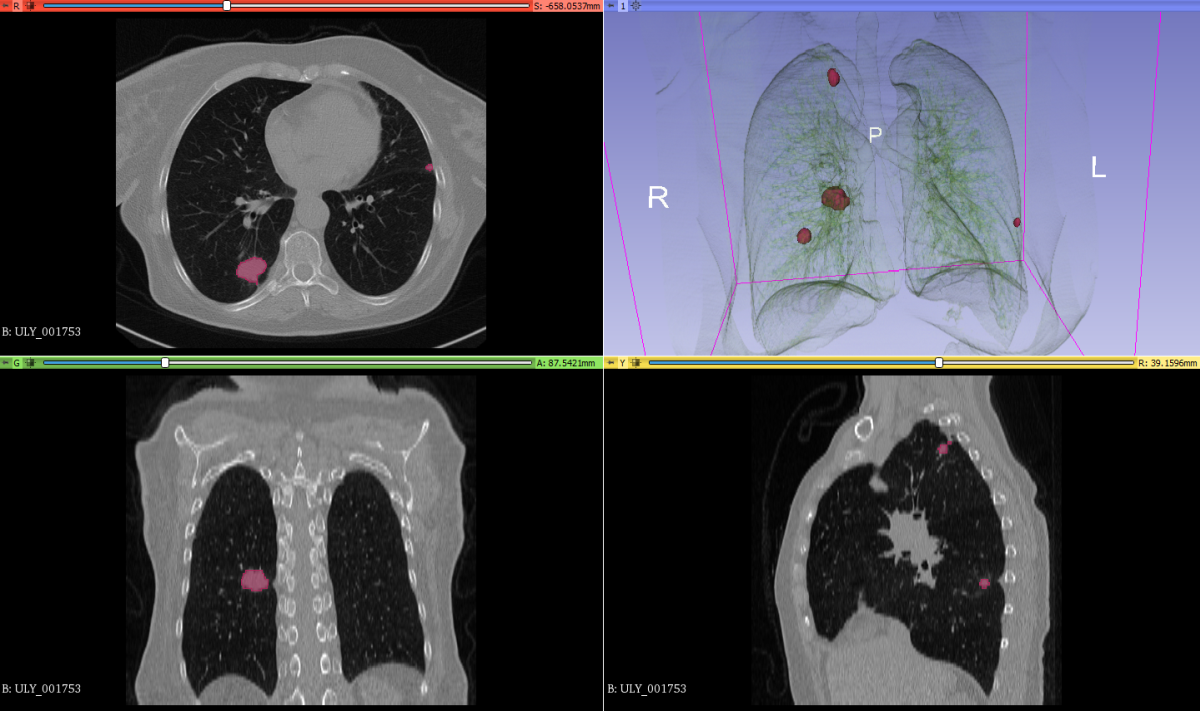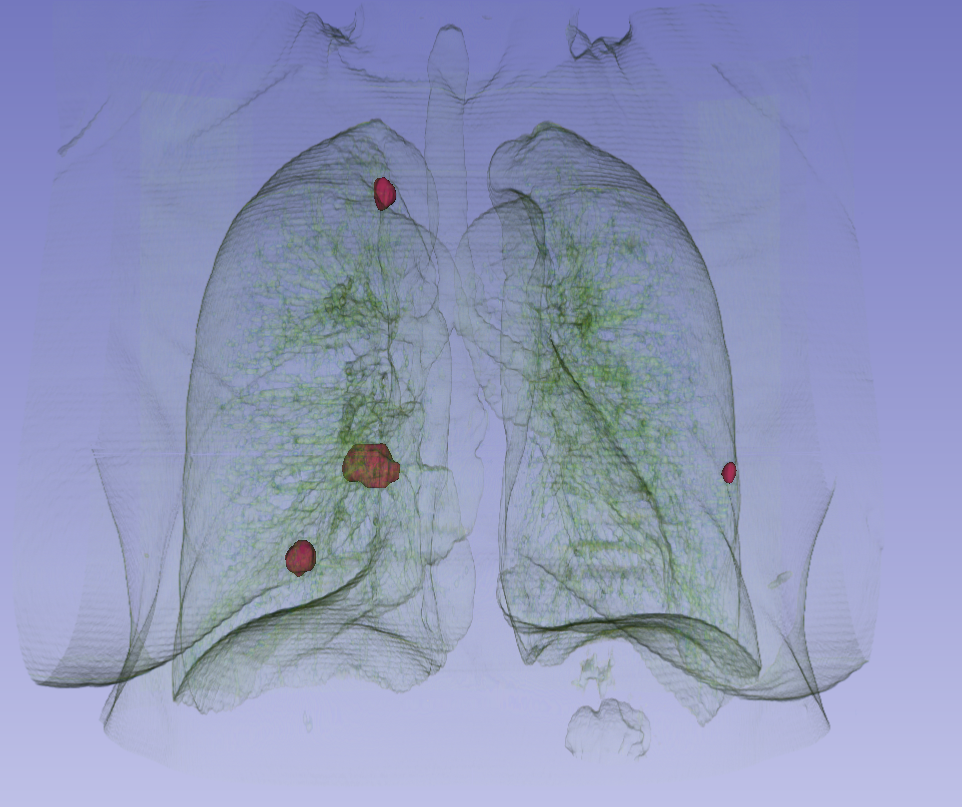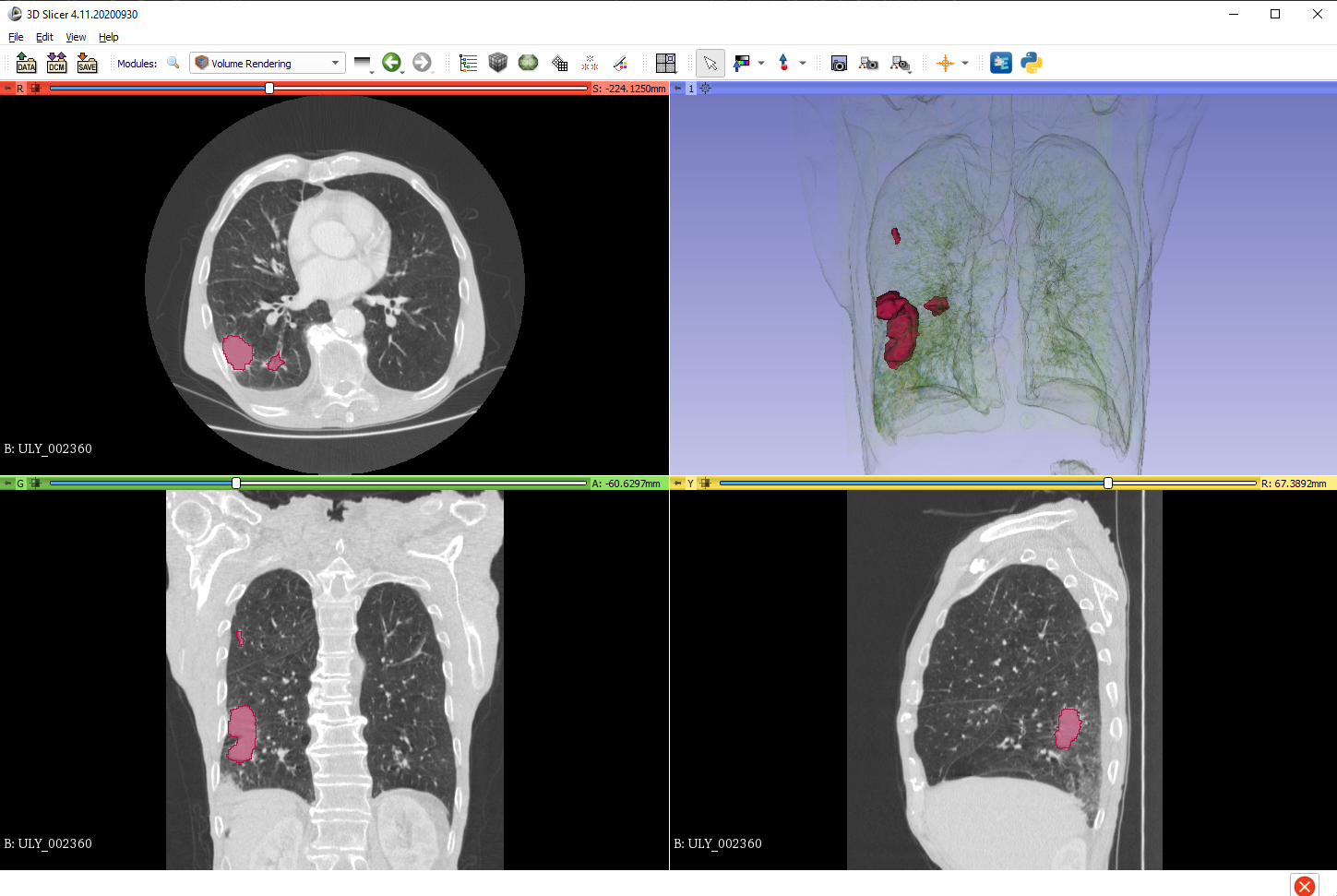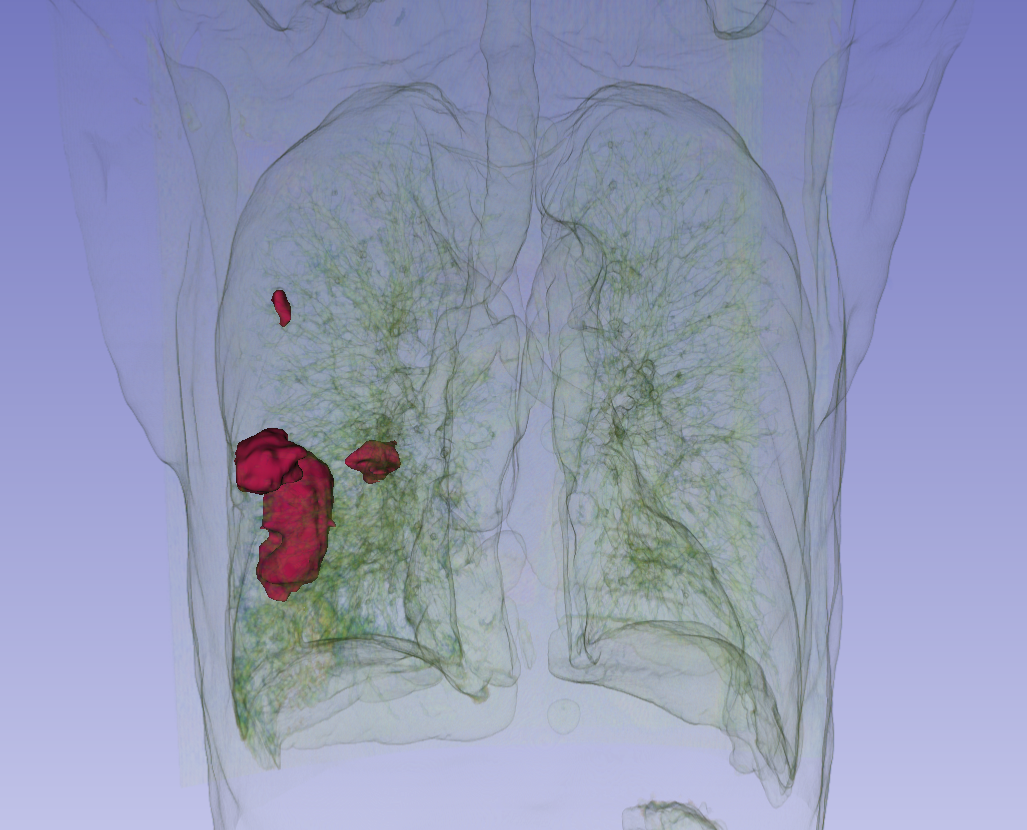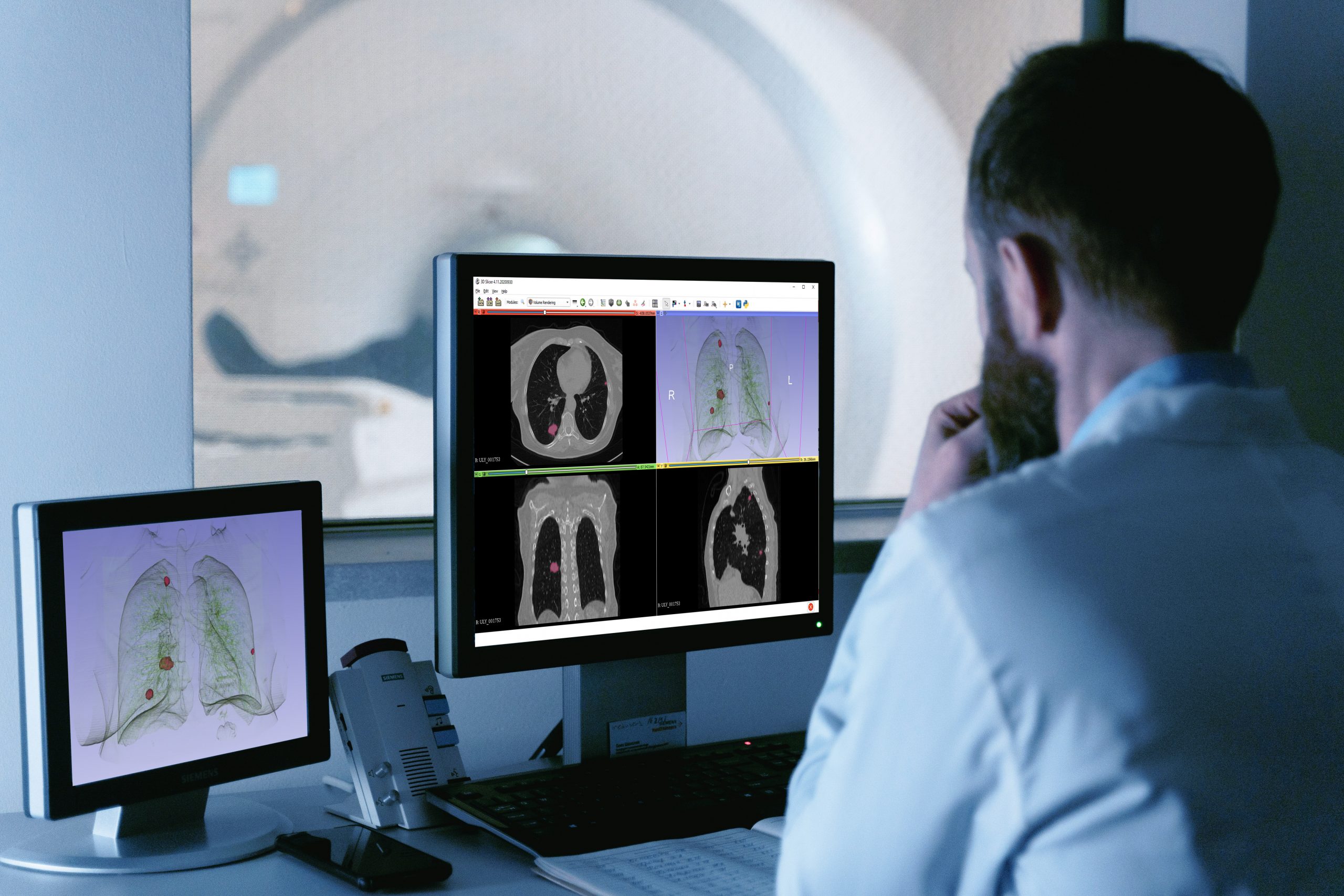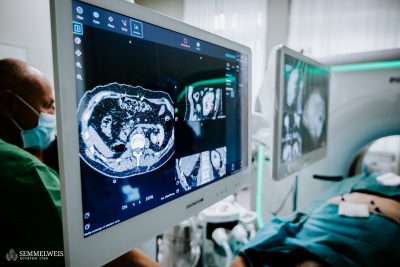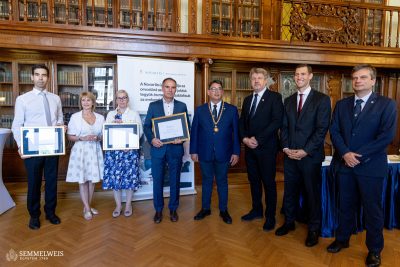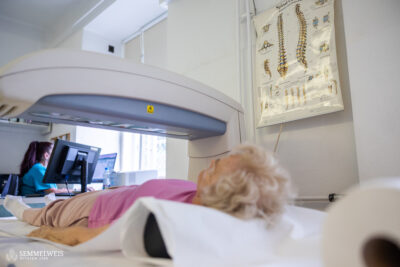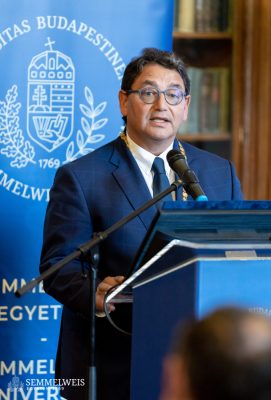 “We have developed a system that could be a milestone in lung cancer diagnostics. The automatic segmentation using artificial intelligence not only helps radiologists to diagnose more efficiently, but also allows a smaller medical team to evaluate a lot more CT images, which means that our colleagues’ daily workload may be significantly reduced, while the amount of work performed increases”, said Dr. Béla Merkely, Rector of Semmelweis University, at the closing event of the development project. He highlighted that the project was the result of a genuine collaboration: the new diagnostics is based on the segmentation of 8300 low-dose chest CT scans taken at Semmelweis University clinics and hospitals in Balassagyarmat, Miskolc, Salgótarján, Nyíregyháza, Szolnok and Baja. He added that the development serves the university’s fundamental goals of keeping up with international trends in education, research-innovation and medicine. The rector stressed:
“We have developed a system that could be a milestone in lung cancer diagnostics. The automatic segmentation using artificial intelligence not only helps radiologists to diagnose more efficiently, but also allows a smaller medical team to evaluate a lot more CT images, which means that our colleagues’ daily workload may be significantly reduced, while the amount of work performed increases”, said Dr. Béla Merkely, Rector of Semmelweis University, at the closing event of the development project. He highlighted that the project was the result of a genuine collaboration: the new diagnostics is based on the segmentation of 8300 low-dose chest CT scans taken at Semmelweis University clinics and hospitals in Balassagyarmat, Miskolc, Salgótarján, Nyíregyháza, Szolnok and Baja. He added that the development serves the university’s fundamental goals of keeping up with international trends in education, research-innovation and medicine. The rector stressed:
This is another step towards achieving our previously announced goal of Semmelweis University becoming one of the top 100 universities in the world, and one of the top 5 medical universities in Europe.
 “Medical universities are an essential part of the Hungarian healthcare system, and one of the most important actors of innovation,” said Dr. Péter Takács, Secretary of State for Health at the Ministry of Interior at the event. He added that development in the Hungarian health sector is no longer dependent on the availability of modern devices, which have been successfully installed in the institutions in recent years. From now on, the aim should be to reduce the workload per unit of human resources, also with this new system. The Secretary of State stressed that artificial intelligence and decision support systems based on it in public health is an area that will be a priority in the next development cycle of the government.
“Medical universities are an essential part of the Hungarian healthcare system, and one of the most important actors of innovation,” said Dr. Péter Takács, Secretary of State for Health at the Ministry of Interior at the event. He added that development in the Hungarian health sector is no longer dependent on the availability of modern devices, which have been successfully installed in the institutions in recent years. From now on, the aim should be to reduce the workload per unit of human resources, also with this new system. The Secretary of State stressed that artificial intelligence and decision support systems based on it in public health is an area that will be a priority in the next development cycle of the government.
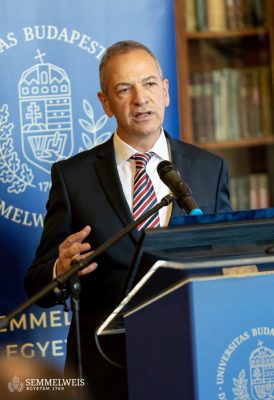 “Artificial intelligence is perhaps the most progressive field of mathematics in IT, and we have now managed to demonstrate its capabilities in the healthcare sector as well,” said Péter Wellisch, CEO of Ulyssys Software Development and Consulting Ltd. He added that his company has a long history in the development of artificial intelligence and neural networks based on deep learning. It is a responsibility for computer scientists to be involved in the evolution of healthcare, where the primary focus is not on the economic goal, but on protecting and improving human life and helping to maintain quality of life.
“Artificial intelligence is perhaps the most progressive field of mathematics in IT, and we have now managed to demonstrate its capabilities in the healthcare sector as well,” said Péter Wellisch, CEO of Ulyssys Software Development and Consulting Ltd. He added that his company has a long history in the development of artificial intelligence and neural networks based on deep learning. It is a responsibility for computer scientists to be involved in the evolution of healthcare, where the primary focus is not on the economic goal, but on protecting and improving human life and helping to maintain quality of life.
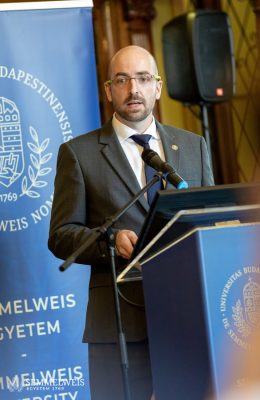 Dr. Pál Maurovich-Horvat, Associate Professor of Cardiology and Radiology, Director of Semmelweis University’s Medical Imaging Centre emphasized in his presentation that lung cancer is currently one of the leading causes of death in Hungary. In Europe, Hungary has the highest mortality rate of this disease. Furthermore, the age-standardised incidence of lung cancer in Hungary is the highest in the world. He explained that the five-year survival rate of lung cancer is greatly influenced by when the disease is detected. “If the lesion is detected in the first stage, the five-year survival can be as high as 55 to 70 percent, while in case the disease is detected in the last, fourth stage, the survival rate can drop to well below 10 percent. Effective low-dose CT screening and the involvement of artificial intelligence can reduce lung cancer mortality rates,” the director said.
Dr. Pál Maurovich-Horvat, Associate Professor of Cardiology and Radiology, Director of Semmelweis University’s Medical Imaging Centre emphasized in his presentation that lung cancer is currently one of the leading causes of death in Hungary. In Europe, Hungary has the highest mortality rate of this disease. Furthermore, the age-standardised incidence of lung cancer in Hungary is the highest in the world. He explained that the five-year survival rate of lung cancer is greatly influenced by when the disease is detected. “If the lesion is detected in the first stage, the five-year survival can be as high as 55 to 70 percent, while in case the disease is detected in the last, fourth stage, the survival rate can drop to well below 10 percent. Effective low-dose CT screening and the involvement of artificial intelligence can reduce lung cancer mortality rates,” the director said.
Already in the 1950s, there were artificial intelligence-based algorithms that tried to mimic human intelligence. A major breakthrough came in the 1980s when machine learning became possible using various mathematical models. The real milestone for radiology came in the 2010s with deep learning, based on so-called neural networks, which are characterised by many connections and multi-layered structures.
The aim was to develop an algorithm in collaboration with Ulyssys Ltd. that can identify CT images which show lesions suggestive of lung cancer with a very good efficiency. The application can distinguish between tumours and healthy cases, detect where the tissue is located and monitor the volume of the tumour, so it can also be used for tumour tracking. He added that more than 10,000 CT images were acquired during the project.
Dr. Pál Maurovich-Horvat summarized his presentation by saying that the development opportunities are very promising, and that they are moving in the direction of extending the deep learning diagnostic system to the diagnostics of cardiovascular diseases in the future – this cluster of diseases is also one of the leading causes of death in Hungary today. In this context, he explained:
We have a well established collaboration with Harvard University, where a neural network can quantify coronary calcification from chest CT scans using a similar principle. Since there is overlap in the risk factors and measurement of the two groups of diseases, if we could incorporate the detection of lung cancer and coronary artery disease into the same screening programme, this could be a huge step forward.
– concluded his presentation the director of the Medical Imaging Centre.
As for approximately when the new system is expected to be implemented in patient care, CEO Péter Wellisch said that a clinical trial is currently underway and will be completed in a few months. He hopes to have the program running by the second half of next year.
Róbert Tasnádi
Translation: Viktória Kiss
Photo: Attila Kovács – Semmelweis University / GINOP-2.2.1-18-2018-00004 project
